For those who are unfamiliar with the concept of monochromes, they are artworks made from a single color. Obviously, this color can be shaded, and the effects of texture, shine or material can also bring a particularity to the final artwork.
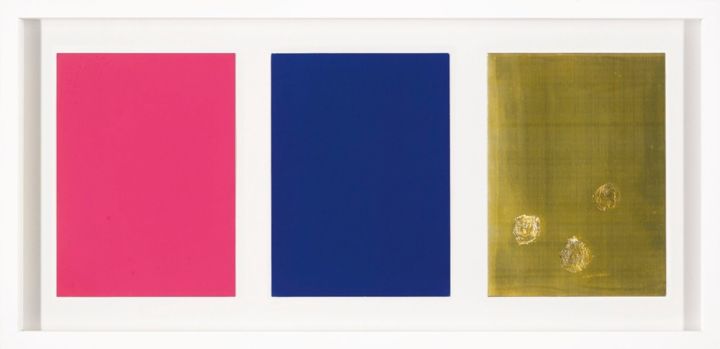
Yves Klein, Triptyque de Krefeld, 1961.
There are monochromes of all colors, whites, blacks, reds, blues, small, monumental, smooth, rough, porous, shiny, satin… Despite its eminently simple and pure character, monochrome represents an inexhaustible medium of expression for artists, who can customize their approaches and techniques to infinity, as we will see.
So put away the pencils, get out the paint rollers: today, we're going through the history of monochromes!
1. Instigators of the movement: the impressionism of Monet and Whistler
For a long time, in the History of Art, monochrome was used as a qualifier for different types of shades or grisailles. However, it's only very recently, at the beginning of the 20th century, that this term became a real artistic genre in its own way, just like landscape paintings, still lifes or surrealist ready-mades.
As you can imagine, the idea of creating a definitive artwork composed of a single plain color didn't emerge overnight. It was the result of a long and progressive process of different artistic researches, notably due to the impressionist works. This isn't surprising: it' s from the impressionist experiments of Claude Monet, Edouard Manet or the American James Whistler that painters move away more and more from the standards of figurative art. They no longer sought to represent nature faithfully, or to embellish it like the Romantics. They try to make the impression, the memory, the sensation, through the prism of their eyes and the movement of their brushes. When Monet painted a landscape, he didn't try to show us his mastery of perspective, or the delicate curvature of a plain. Rather, he strives to show us the landscape as he himself observed it: with the morning fog, with the play of light exerted by the sun's rays, with the effects of shadow and brilliance that only the weather of the moment can have the secret. He gives us the impression of being there, of being present. Through these different researches, some of these artworks started to have the character of monochromes, without real will of the artist. This is notably the case of an artwork like Snow Effect in Giverny, painted in 1893. By representing a snow scene in a morning fog, the artist necessarily refuses to use a wide range of colors, and the final artwork looks more and more like a monochrome:
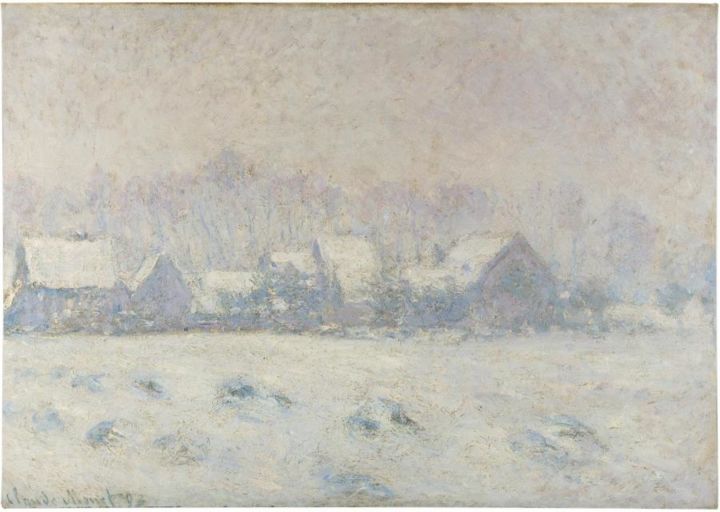
In spite of the importance of these researches on the light, the color and the motives, the purification of the subject and the dematerialization of objects, impressionist experiments remain in a completely figurative pictorial approach, and therefore don't yet constitute true abstract monochromes.
2. Theory of the first monochrome: Kazimir Malevich
Until very recently, art historians considered the Russian artist Kazimir Malevich to be the first creator of a true monochrome. With his Black Square, created in 1915, Malevich was at the forefront of the genre. However, his precursory role is finally to be relativized, in view of the (very) recent discoveries, which we will see in the 3rd part of this article.
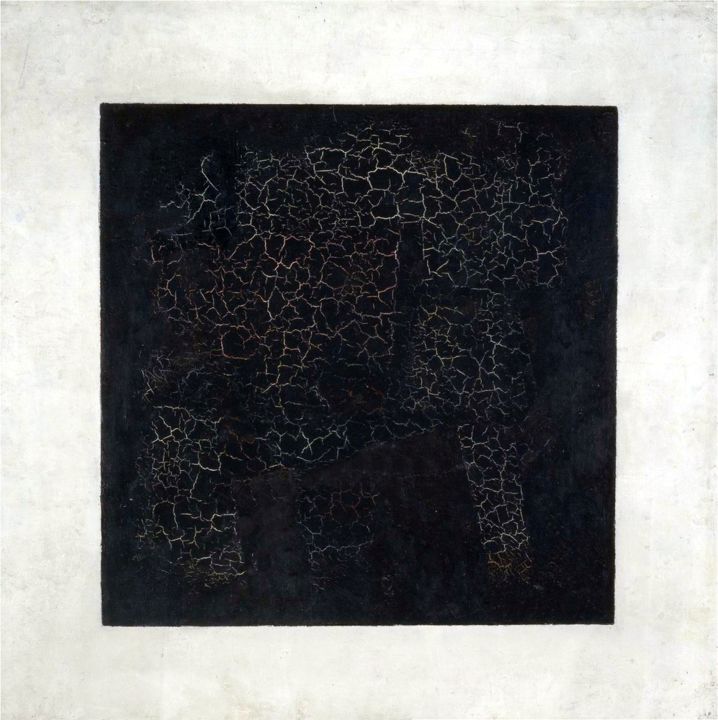
Kazimir Malevich is the theorist of Suprematism, an artistic movement based on abstraction and geometric purity. The emergence of this movement in Russia cannot be explained without some contextual notions: at that time, revolutions dominated the world scene: industrial revolution shook up capitalism and forces of production, and various political revolutions upset the great European nations. On the Soviet side, mentalities were reshaped by the passage from a tsarist regime to an authoritarian communist regime. In this context of renewal, artists seek to start the history of art on new bases, breaking with the aging pictorial traditions. The painting Black Square is representative of this reversal: Malevich decided to free himself from figurative diktats. Painting was no longer obliged to represent, refer to or signify anything specific. The final artwork draws its nature from itself, without any justification of meaning, prerequisites or keys to understanding: it is abstraction itself. Where classical painting sought to represent and embellish nature, where the Impressionists wished to include their personal vision, Malevich decided to produce an artwork that represents nothing real, devoid of any link with his personality and perception.
3. Discovery of earlier monochromes: The Incoherents
As we have said, art historians have long considered Malevich the first creator of a true abstract monochrome. That was without counting an unprecedented discovery that took place in 2018 in France. In a trunk abandoned at the bottom of an attic, a Parisian auctioneer discovered a unique set, considered lost: 17 artworks from the Incoherents movement, a joking artistic movement created in the late 19th century in the French capital. At the head of this mysterious movement was Jules Levy, a famous satirical writer at the time, now forgotten.
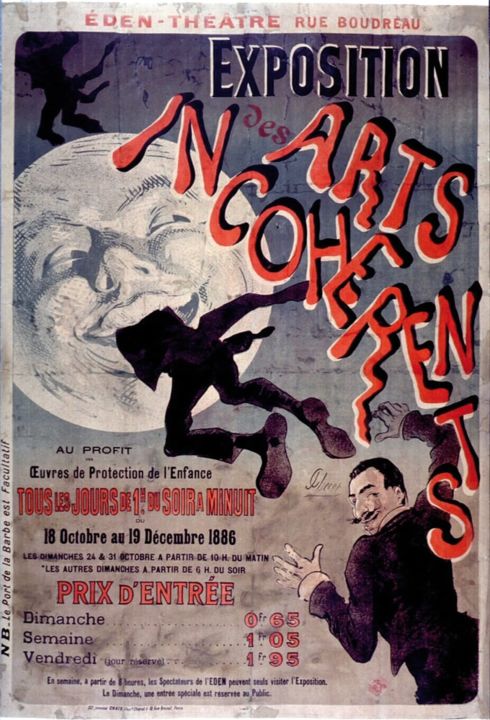
Poster by Jules Chéret for the Exposition des Arts incohérents in 1886
With the help of his artist friends, poets and cartoonists, they founded this group as a counterpoint to the bourgeois worldliness of academic art. Their idea was simple: to make the public laugh by mocking the archaic codes of official art and the experiments of avant-garde art of the time. For that, they used all the mediums at their disposal: puns, caricatures, parodies, posters, paintings... They organized different openings, temporary exhibitions, and even some parties. In spite of a powerful success during the first years, the group falls quickly into the lapse of memory, public gets tired of their absurd humor which struggles to renew itself. This short artistic parenthesis, apparently anecdotal, will however be fundamental for the emergence of most famous artistic currents of the 20th century, in particular for abstract art and surrealism.
Indeed, we find in the achievements of this group of Incoherents the first manifestations of monochromes and ready-mades, 30 years before Malevich, Suprematism and Surrealists. Ready-mades, these objects transformed into artworks by the will of the artist (you must know Duchamp's Urinal), opened the way to many forms of contemporary art such as conceptual art or Arte povera: this shows the importance of the forgotten movement of Incoherent Arts, which wasn't ignored by the surrealists in 1920, who fantasized about rediscovering these iconic artworks that were thought to be destroyed forever.
Among the artworks rediscovered in this trunk in 2018, we find various monochromes, whose particularly well-thought-out titles remind us of the quite mischievous spirit of their authors. The idea of creating a monochrome canvas with a humorous title probably comes from Paul Bilhaud, a close friend of the movement's creator, Jules Levy: in 1882, he' s known to have exhibited a black monochrome soberly titled "Negroes Fighting in a Tunnel at Night" (Sorry for the N-Word but it was obviously another era). The joke really seduced a member of the group, Alphonse Allais, as he then set about producing a series of seven monochrome paintings between 1882 and 1890. There are different variants: "Apoplectic Cardinals Harvesting Tomatoes on the Shore of the Red Sea" (red monochrome), "Some Pimps, Known as Green Backs, on their Bellies in the Grass, Drinking Absinthe" (green monochrome), " First Communion of Anaemic Young Girls in the Snow" (white monochrome), or "Band Of Dusty Drunks In The Fog" (grey monochrome).
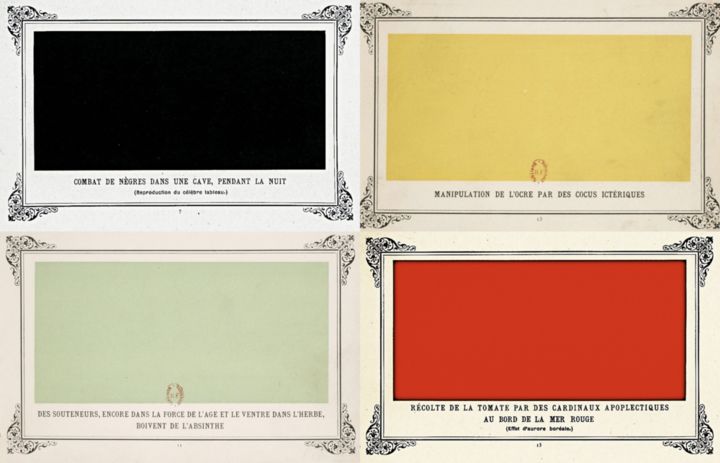
4. Master of monochromes: Yves Klein
How to describe history of monochromes without mentioning the legend of Yves Klein? He's obviously not the first artist to experiment with the possibilities of monochrome, but he' s the one who truly revolutionized the genre.
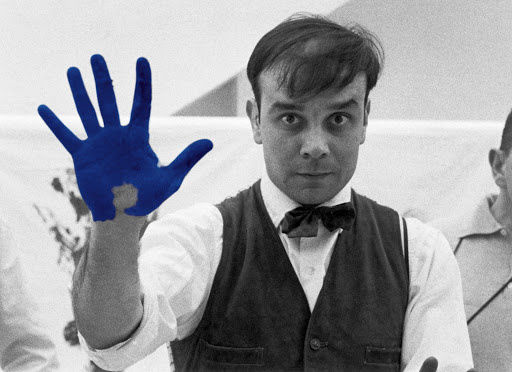
His approach to monochrome was very spiritual, esoteric: for him, figurative art was terrestrial, it represented what the common man already knew. He wanted to explore the sky, space and the infinite: necessarily in an immaterial and refined way, like what we observe when we look up at the sky during a beautiful summer day. Before becoming the representative of the deep blue that we know today, Yves Klein tried his hand at different monochrome colors. In 1955, he held his first exhibition of monochromes in Paris: we contemplate oranges, blues, greens, yellows, reds ... The public was confused: it seeks by all means an explanation to this compilation of raw and united colors. The artist was present at the opening, he listened discreetly to the conversations of the visitors. They quickly defused the frustration of their incomprehension by having the different canvases discussed, by developing hypotheses linked to the hanging of one color next to another... These extrapolations were to vex Yves Klein vigorously: for him, each monochrome must be considered individually. To seek a justification for his exhibition as a whole was to distort his work.
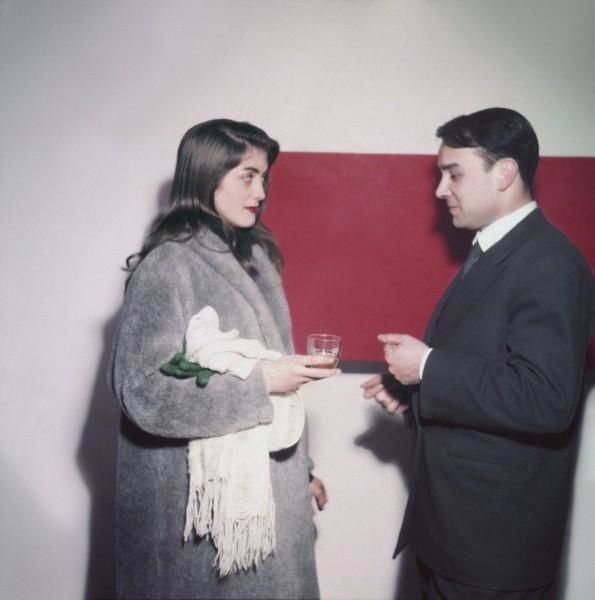
In order to avoid a recurrence of these troubles, he decided to concentrate on a single color, the one that, for him, most represented his work and his quest for infinity: blue. As you can see, Yves was a perfectionist (or at least a great maniac), and he quickly faced a new problem: he wanted to obtain a very particular blue, a deep and infinite blue, which would have the same color as the pure pigments, in powder, that he was already using. Unfortunately, as soon as the pigments came into contact with other binders to be transformed into paint, they lost their depth, their power, and the final color automatically became duller, less brilliant than under its pigmentary hue.
But since nothing could resist Yves Klein's will, he decided to become a chemist while he found a solution to the problem of blue pigments. In 1954, he triumphed and invented his own color, IKB (International Klein Blue), which he had protected shortly afterwards by registering it with the French National Institute of Industrial Property. Following this feat, he never used any other color than this deep blue to create dozens and dozens of monochromes.
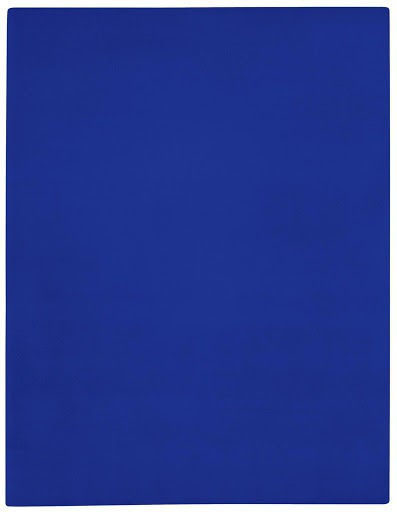
The history of monochrome doesn't allow any conclusion since its first manifestations in 1882. Many artists have contributed and still contribute today to this fascinating epic: the American Mark Rothko and his two-tone compositions, Ad Reinhardt and his geometric shades, Pierre Soulages and his experiments with deep black (outrenoir), or Lucio Fontana and his incised monochromes at the border between painting and sculpture.
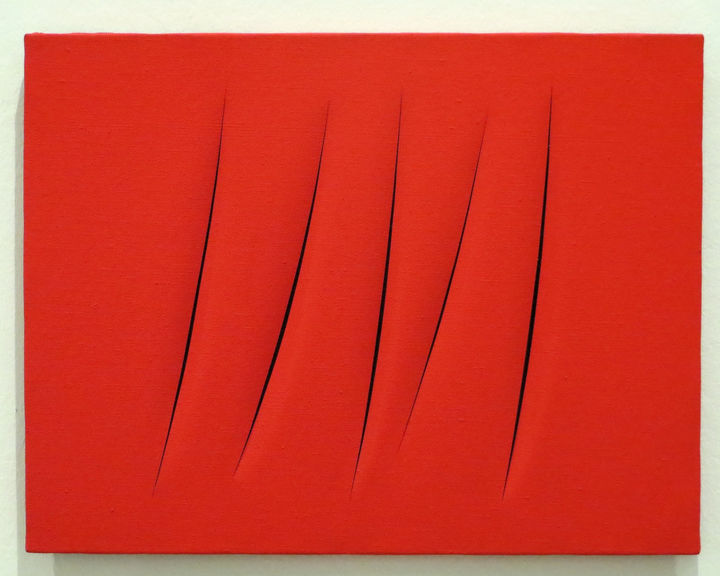
Concetto spaziale, Attese, 1963, Lucio Fontana
Whether you are already a fan of monochrome, or whether you have discovered the full extent of this genre of painting, we hope that you have enjoyed this article, or that it has convinced you. And if you are eager to discover more, we warmly recommend the discovery of our collection of beautiful monochromes available on Artmajeur.

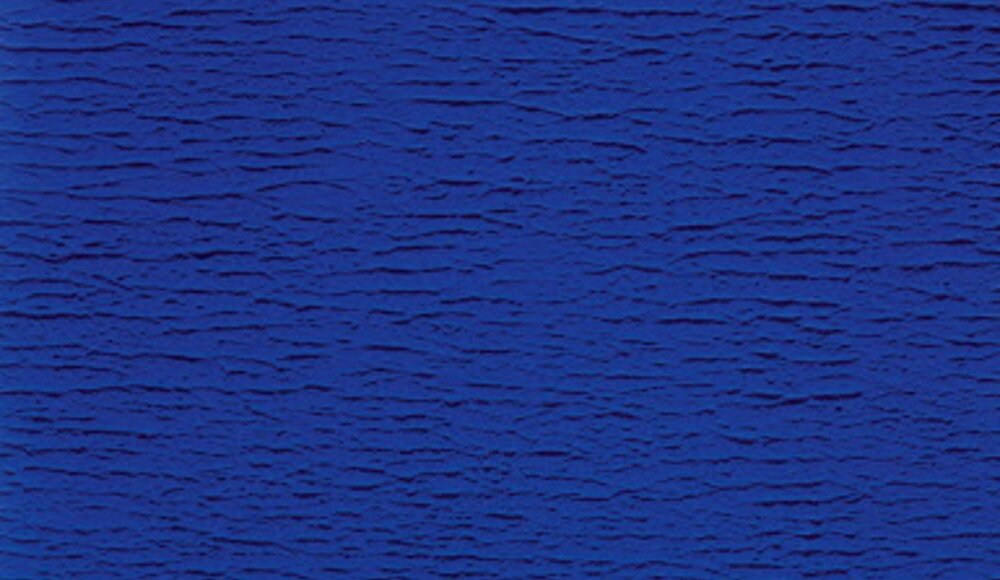
 Bastien Alleaume
Bastien Alleaume